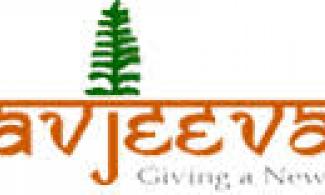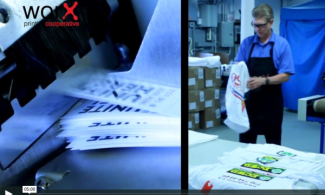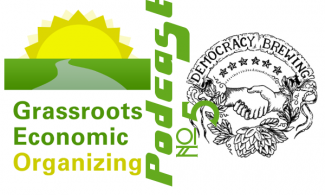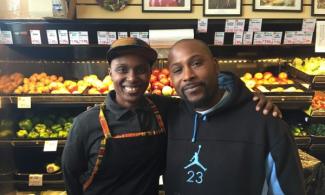
Building a Digital Bridge Between the Poor and Markets
Approaches for creating sustainable livelihoods assume that a rural household has the ability to make rational decisions to respond to often changing opportunities and constraints, including those offered by markets. In sync with this assumption, envisioning livelihood opportunities for illiterate and unskilled populations (particularly women) has been the most coveted goal of every development agency, both within government and beyond. While sustainable livelihoods are desirable, they are not easy to attain and there have been few success stories. (Gillet et al., 2008). The result of many such experiments is that the majority of programs end up with training and capacity building packages which, although they seed the potential for skill development, sadly fail to create sustainable livelihoods. Women are often forced to engage in a limited selection of low-profit non-farm activities rather than linking with more advantageous market opportunities (World Bank, 2009).
The result of many such experiments is that the majority of programs end up with training and capacity building packages which, although they seed the potential for skill development, sadly fail to create sustainable livelihoods. Women are often forced to engage in a limited selection of low-profit non-farm activities rather than linking with more advantageous market opportunities (World Bank, 2009).
The approach adopted in the ‘experiment’ of the Navjeevan Collective is from ‘cradle to grave’ to ensure that markets work for the poor. Navjeevan collective is a community owned and professionally managed social enterprise, working with families displaced by the Kalinga Nagar project of Tata Steel, in India. The objective behind formation of the Navjeevan Collective is to provide livelihood support to the members of the displaced families who are unlikely to earn a remunerative livelihood in an economy which is being transformed from agricultural to industrial. Starting from a participatory process in identification of women entrepreneurs, to linkages at multiple levels with markets, adequate time and focused resources are put in. A strong team of professionals which includes designers, traditional artists, sociologists, and management professionals are providing support and guidance to the producer collective.
Much like the majority of such initiatives, to begin with Navjeevan was doing 'job-work' for other established brands in India, which ensured minimal but stable returns to the collective's members. Dr. Kurien, father of the White Revolution & pioneer of the cooperative movement in India, firmly believed that unless the marketing functions of businesses are owned/controlled by producer collectives, such initiatives are of no use. With limited resources at hand, such producer collectives often fail to reach out to markets directly, and therefore are compelled to continue doing work for other established players at low prices --popularly known as 'outsourcing'. The world very clearly witnessed the extreme negative consequences of such outsourcing work in Savar factory in Bangladesh in April 2013. In the Navjeevan experiment, members decided to gradually move beyond working for 'others' and establish their own brand. After several brainstorming sessions, an innovative sales channel in the form of an e-commerce site was charted out, wherein Navjeevan's products can now be sold directly under its own brand "Shades" (reflecting different shades of color which our garments and crafts carry). The idea of an e-commerce site as a sales channel appears promising as the Indian online shopping market grew by 18% in 2012. The formation of Navjeevan’s online shopping cart is a unique innovation in marketing by such rural, poor collectives. Perhaps until now, none of the other Indian producer collectives have ventured into this new and evolving internet-based customer group. [1] Now members of Navjeevan will be able to get a larger share of the value chain and customers will also receive relatively low priced products. The digital divide is being turned into a digital bridge. As Navjeevan's visibility to the outside world improves, our e-commerce platform is expected to emerge as one of the most important sales routes for Navjeevan.
In the Navjeevan experiment, members decided to gradually move beyond working for 'others' and establish their own brand. After several brainstorming sessions, an innovative sales channel in the form of an e-commerce site was charted out, wherein Navjeevan's products can now be sold directly under its own brand "Shades" (reflecting different shades of color which our garments and crafts carry). The idea of an e-commerce site as a sales channel appears promising as the Indian online shopping market grew by 18% in 2012. The formation of Navjeevan’s online shopping cart is a unique innovation in marketing by such rural, poor collectives. Perhaps until now, none of the other Indian producer collectives have ventured into this new and evolving internet-based customer group. [1] Now members of Navjeevan will be able to get a larger share of the value chain and customers will also receive relatively low priced products. The digital divide is being turned into a digital bridge. As Navjeevan's visibility to the outside world improves, our e-commerce platform is expected to emerge as one of the most important sales routes for Navjeevan.
Navjeevan is aiming to achieve self-sufficiency in another two year’s time. Navjeevan had (unaudited) revenues of Rs. 92 Lakhs in the just concluded financial year (April 2013-March 2014) and is now heading toward revenues of Rs. 3 Crore in the current financial year (April 2014-March 2015). [editor's note: lakh = 100,000; crore = 10 million.]
Let’s keep our fingers crossed and, in the meantime, buy some beautiful garments and ethnic crafts from the online shopping cart to support this noble and ingenious endeavor of over 200 women.
[1] Indian e-commerce, pegged at $9.5 billion according to a study by the Internet & Mobile Association of India and KPMG, is projected to grow to $12.6 billion by the end of this year (2014). By 2020, it is expected to contribute around 4 per cent to GDP of India.
References
Gillett, R., Nash, W., Govan, H., Preston, G. and Lam, M. 2008. Livelihood Diversification as a Marine Resource Management Tool in the
Pacific Islands: Lessons Learned. WorldFish Center and the Secretariat of the Pacific Community. SPC Fisheries Newsletter, Number 125. pp. 32–39.
World Bank. 2009. Ethiopia, Diversifying the Rural Economy: An Assessment of the Investment Climate for Small and Informal Enterprise. Agriculture and Rural Development Unit, Africa Region, October 6. World Bank, Washington, DC.
Citations
Sharda Gautam (2014). Navjeevan Collective Pioneers E-commerce: Building a Digital Bridge Between the Poor and Markets. Grassroots Economic Organizing (GEO). https://geo.coop/story/navjeevan-collective-pioneers-e-commerce





Add new comment